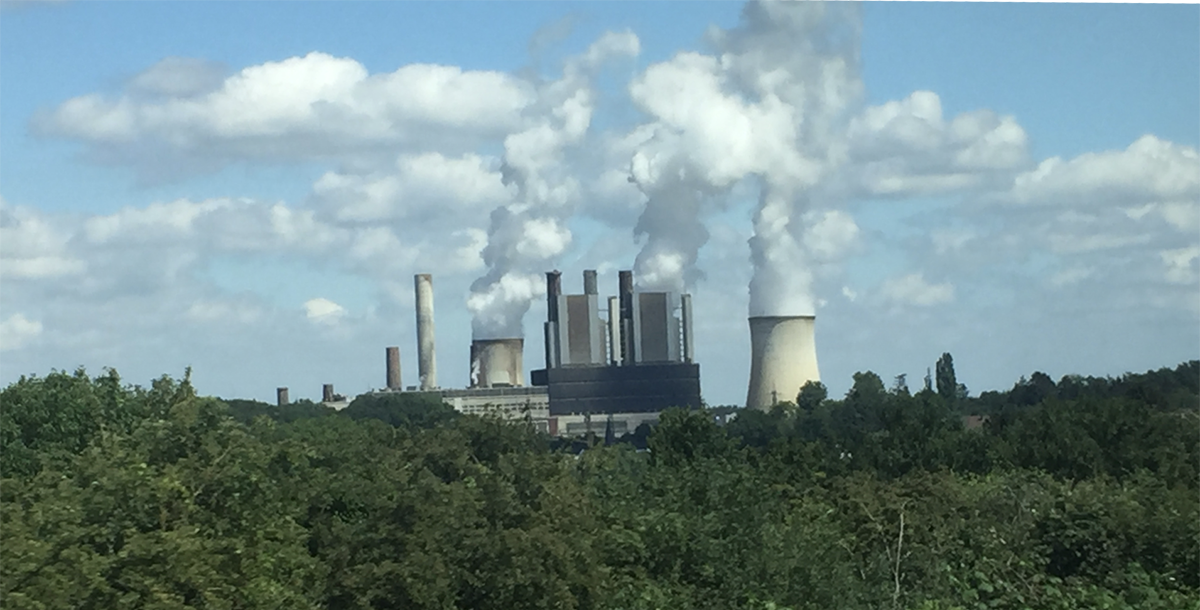New material design tops carbon-capture from wet flue gases

In new research reported in Nature, an international team of chemical engineers have designed a material that can capture carbon dioxide from wet flue gasses better than current commercial materials.
“Flue gas” refers to any gas coming out of type of pipe, exhaust, or chimney as a product of combustion in a fireplace, oven, furnace, boiler, or steam generator. But the term is more commonly used to describe the exhaust vapors exiting the flues of factories and powerplants. Iconic though they may be, these flue gases contain significant amounts of carbon dioxide (CO2), which is a major greenhouse gas contributing to global warming.
One way to ameliorate the polluting impact of flue gases is to take the CO2 out of them and store it in geological formations or recycle it; there is, in fact, an enormous amount of research trying to find novel materials that can capture CO2 from these flue gasses.
Metal Organic Frame works (MOFs) are among the most promising of these materials, but most of these materials require drying the “wet” flue gas first, which is technically feasible but also very expensive – and thus less likely to be implemented commercially.
In a strange twist of nature – or design chemistry – materials that are good at capturing CO2 have proven to be even better at capturing water, which renders them of little use with wet flue gasses. It seems that in most of these materials, CO2 and water compete for the same adsorption sites – the areas in the material’s structure that actually capture the target molecule.
Now, from a team of scientists led by Berend Smit (EPFL Valais Wallis and an adjunct professor at UC Berkeley) and the Reimer Lab at UC Berkeley’s Department of Chemical and Biomolecular Engineering, have designed a new material that prevents this competition, is not affected by water, and can capture CO2 out of wet flue gases more efficiently than even commercial materials.
In what Smit calls “a breakthrough for computational materials design”, the scientists used an out-of-the-box approach to overcome the difficulties presented with material design: the tools of drug discovery.
When pharmaceutical companies search for a new drug candidate, they first test millions of molecules to see which ones will bind to a target protein that is related to the disease in question. The ones that do are then compared to determine what structural properties they share in common. A common motif is established, and that forms the basis for designing and synthesizing actual drug molecules.
Using this approach, the Smit team computer-generated 325,000 materials whose common motif is the ability to bind CO2. All the materials belong to the family of metal-organic frameworks (MOFs) – popular and versatile materials that Smit’s research has been leading the charge on for years.
To narrow down the selection, the scientists then looked for common structural motifs among the MOFs that can cleanly bind the CO2 without the water. This subclass was then further narrowed down by adding parameters of selectivity and efficiency, until the researchers’ MOF-generation algorithm settled on 35 materials that during simulations showed better CO2 capturing ability from wet flue-gas than current materials that are commercially available.
“What makes this work stand out is that we were also able to synthesize these materials,” says Smit. “That allowed us to work with our colleagues to show that the MOFs actually adsorbed CO2 and not water, actually tested them for carbon capture, and compared them with existing commercial materials. The groups in the University of Ottawa, Heriot-Watt University and the Universidad de Granada showed that our designed materials captured carbon dioxide from wet flue gasses better than the commercial materials.”
Berkeley Chemical and Biomolecular Engineering Professor Jeffrey Reimer focused his attention on proving whether the MOFs as designed, synthesized, and tested actually functioned according to the molecular mechanism revealed in simulations. Solid state NMR experiments confirmed that they did. “The experiments carried out in Berkeley showed that all our predictions were correct," says Smit.
Professor Reimer commented, “This paper represents the 21st century trend in the sciences: a compelling societal problem; the de novo construction of a chemical or material on a computer to address the problem; the synthesis of a material that has never been; the macroscopic confirmation that material meets the societal need; and the molecular assessment that the material is working as designed. This was accomplished by this team of authors working seamlessly together across continents. What a thrill!”
-----
Related information:
Peter G. Boyd, Arunraj Chidambaram, Enrique García-Díez, Christopher P. Ireland, Thomas D. Daff, Richard Bounds, Andrzej Gładysiak, Pascal Schouwink, Seyed Mohamad Moosavi, M. Mercedes Maroto-Valer, Jeffrey A. Reimer, Jorge A. R. Navarro, Tom K. Woo, Susana Garcia, Kyriakos C. Stylianou, Berend Smit. "Data-driven design of metal-organic frameworks for wet flue gas CO2 capture". Nature 576, 253–256 (2019). DOI: https://doi.org/10.1038/s41586-019-1798-7
For more information contact:
Professor Berend Smit
+41 21 69 30079, +41 21 69 58285
berend.smit@epfl.ch(link sends e-mail)
https://www.epfl.ch/labs/lsmo
